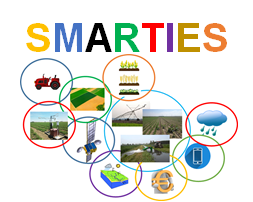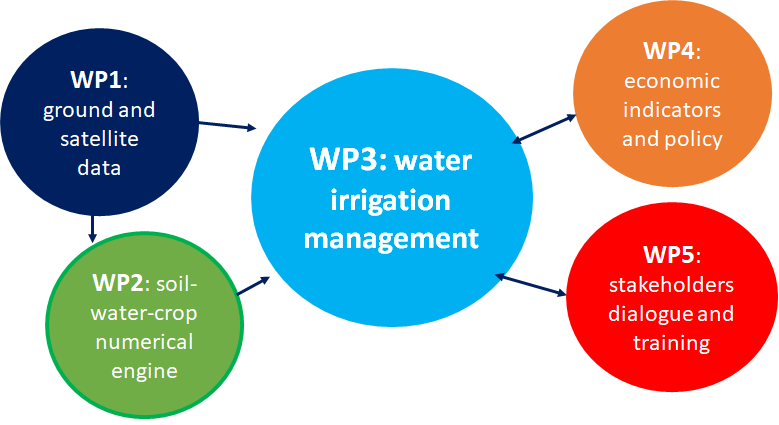The research methodology is based on a multi-disciplinary approach that links together several tools designed pixel wise as: numerical soil moisture energy – water balance models, crop model, assimilation of satellite data, estimation in real time of present and future soil water content with daily to seasonal forecast horizons.
The project aims to improve farm and irrigation district water use efficiency and farm profitability developing a real-time operational irrigation management web-gis system for parsimonious and precise irrigation optimizing exact water use and relative water productivity, integrating farm analysis into irrigation district ones.
The SMARTIES system will be designed to be used: i) in real time mode during the irrigation season to support irrigation strategy for weekly and seasonal forecast; ii) in an off-line mode, before the irrigation season, as a simulator of irrigation and crop yield strategy under seasonal forecast conditions supporting crop and irrigation decision strategy and the irrigation water policies impacts.
In addition to the above operative objective, several scientific objectives will be addressed.
The objectives stated above will be achieved through a number of interconnected and synergic activities, which are divided in work packages (WP), with their own deliverables.



